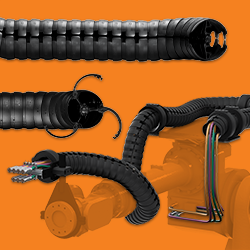Market for Unmanned Surface Vessels Sees Rapid Growth
Unmanned surface vessels (USV) still lag far behind their aerial equivalents in terms of technical capabilities, technology, and deployment. However, new threats, cost-benefit calculations, operational experiences in the past decade, and new technological developments are driving rapid growth in the market.
USV may be used instead of manned vessels not only for defense but also in Homeland Security (HLS), security, and civil applications such as vessel monitoring, law enforcement (drugs, piracy), and enforcement of fishing and environmental laws.
When protecting and securing strategic facilities at sea, USV can fill all parts of the integral security solution - surveillance and detection, recognition and alerting, and finally neutralizing the threat. USV can also be launched from shore, patrol vessels or from the facility itself, which is another important advantage over a standard vessel.
"USV significantly reduce the costs of patrol hours and, when used in fleets, can cover more sea area," said Frost & Sullivan Consultant Yakov (Yaki) Baranes. "Using USV as the main patrol solution reduces the need for manned vessels; USV can approach any suspected vessel to verify threats such as pirates or illegal immigration boats, calling for the manned patrol vessels only when required."
Tactical advantages of USV when integrated with top technologies on board will help revolutionize sea warfare. USV can operate with navy ships such as corvettes, frigates, and destroyers as an additional target detection platform, to identify enemy ships and launch missiles. Significantly, USV will provide the capability to combat terrorists who use small, low-cost vehicles (asymmetric threats) as a weapons platform. USV can close the range to suspicious targets for better examination and even help neutralize them without risking human life.
"While asymmetric warfare may be the main reason for developing USV, some navies are actually seeing the symmetrical advantage in robot vessels," noted Mr. Baranes. "For instance, the U.K. and U.S. navies are already considering the technology for tracking ships and providing intelligence to maritime forces, particularly in combination with other types of drones, in support of covert operations."
However, there are some challenges holding down the unmanned revolution. One of them is a decline in defense budgets due the economic recession. For security and HLS applications, the lack of a central procurement authority for government applications and the absence of legislation and regulations for safe sailing routes in open and closed seas is a major obstacle. Nevertheless, the industry anticipates that a combination of technical evolution and regulatory frameworks will enable vast defense and non-defense applications for USV.
There are also some technical and technological challenges USV should overcome. The key one is the communications problem. A drop in communication with USV can cause complete disorientation of the vessels, posing a real danger of them crashing into other vessels. The inability to respond in real time when needed will be a huge disadvantage as well. The small size of USV also impacts the capability of its energy sources. Batteries need to supply power to radar, GPS, and other navigating systems as well as computers, electro optics, weapons, stabilizers and more. Additionally, OEMs still need to close gaps in independent navigation capabilities, autonomous decision-making, and sensors stabilization.
"Once the technical issues are addressed by the industry, USV could easily take part in safety and other naval regulation tests," summarized Mr. Baranes. "Like with unmanned aerial vehicles, technical and technological gaps related to USV will be closed only after broader uptake, as end users demand more solutions and applications."
If you would like to learn more on Frost & Sullivan's new research, Analysis of USV Adoption and Integration in Defense & Security, please contact Joanna Lewandowska, Corporate Communications, at joanna.lewandowska@frost.com. Please include your full contact details in the query.
Source: http://www.frost.com/
Featured Product

igus® - Free heavy-duty plastic bearings sample box
The iglide® heavy-duty sample box provides a selection of five unique iglide bearings, each suitable for use in heavy-duty equipment due to their self-lubricating, dirt-resistant properties. Each bearing material boasts unique benefits and is best suited for different application conditions, though each can withstand surface pressures of at least 11,603 psi at 68°F.
